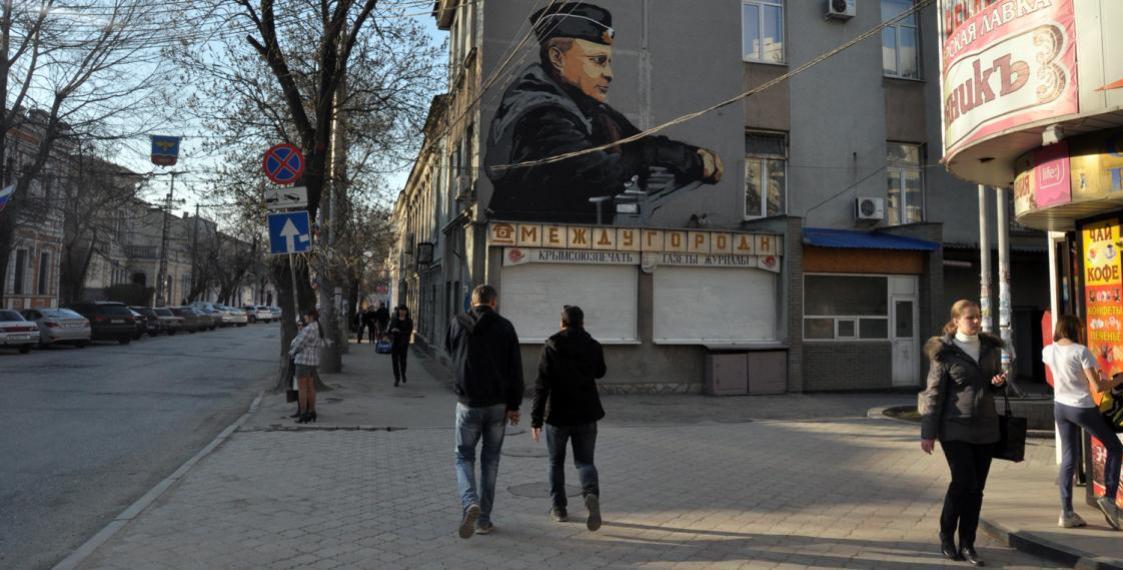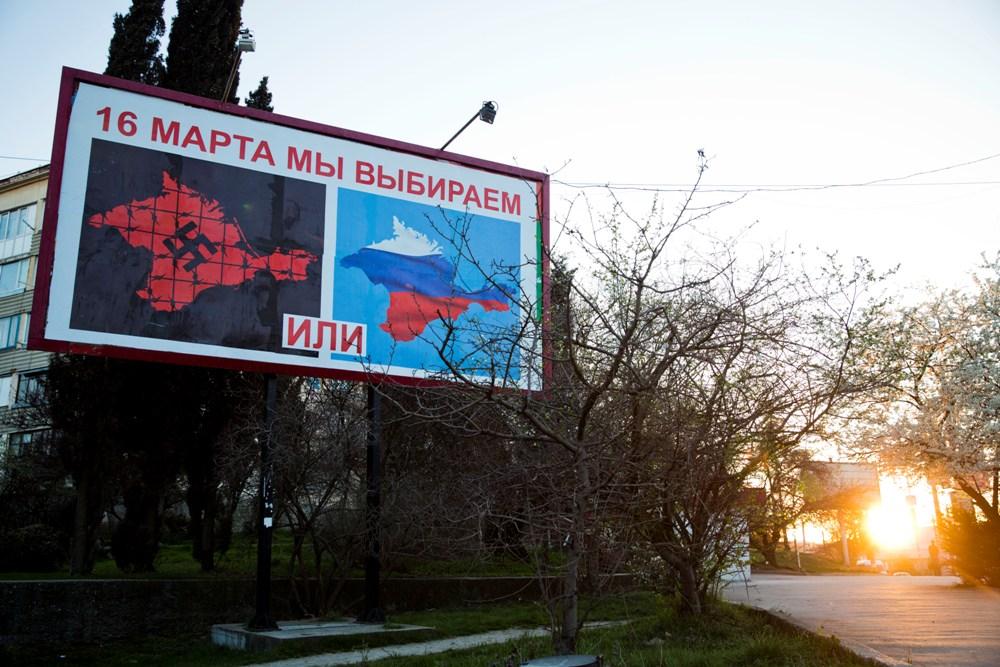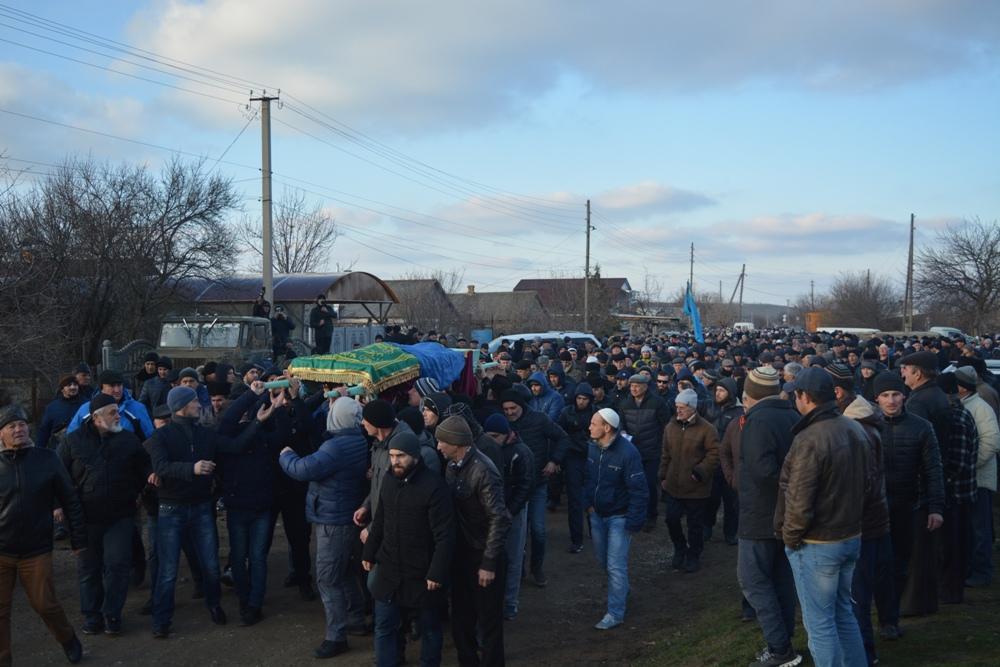Crimea: propaganda vs. reality

Five years ago on 16 March 2014, a referendum was held on the status of Crimea, an autonomous republic within Ukraine. Russian data has it that over 96 per cent of the population voted for the reunification of Crimea with Russia. Based on the results of the referendum, Russia announced the accession of the region on 18 March. Over the next five years, the Russian media has incessantly spoken to the incredible success of the new, Russian Crimea. How realistic are these Crimean “achievements”, and have the promises of a better life within the folds of the Russian Federation come true?
Tourism beating all records
The new records of tourism in Crimea are one of the most popular topics of Russian propaganda.
At the end of the 2018 season, the media reported that the peninsula had experienced its best season in the post-Soviet era – almost seven million tourists.
The veracity of these figures is questionable. The main issue to take into account is the method used for counting tourists:
If, as a basis for ‘tourists’, you count all passenger traffic across the administrative border, then the number of seven million seems realistic.
However, if you count how many people actually stayed overnight in the region, then there appears to be several issues – data from Krymstat casts doubt on the statement.
In a press release on Tourism Day, Krymstat reported that in the six months of the 2018 tourist season, 481,600 people stayed in “collective accommodation facilities” (ed. hotels, hostels, boarding houses), with about 95 per cent of them being Russian citizens. Even taking into account the number of tourists after the publication of the press release on 27 September (that is, after the end of the main season), these figures are far lower than seven million.
• Fences at railway stations and closed beach entrances – how Crimea is preparing for tourist season
• What pro-Russian Crimeans weren’t ready for
Pensions and salaries are higher, life is better!
Promises of higher wages and pensions played an important role in the Crimean referendum. In 2014, Ukrainian salaries and pensions were significantly lower than Russian ones, and the prospect of receiving a higher income was attractive to many. And, indeed, both pensions and salaries have risen to Russian standards.
However, everything is not so rosy when it comes to the financial situation of the population.
Pensioners constitute about 30 per cent of the population of the peninsula, and live on a pension of 12,000 rubles [about $180]. The average salary is $435 per month, but this is not the salary of the majority of Crimean residents.
The gap between high and low incomes is one of the largest in Russia. Crimea is in 69th place out of 85 in terms of the level and distribution of wages. Around 30% of salaries are less than 15,000 [about $225], and only 0.85 per cent, for example officials, make more than 100 thousand roubles [about $1,505].
In addition to average incomes in Crimea, prices for goods and services have also increased, but disproportionately. While the average income in Crimea is lower than the average in Russia, prices on the peninsula for some goods and services are comparable to those in Moscow.

The budget is growing
The budget has grown significantly. In 2018, the regional budget amounted to 168 billion rubles [about $2.5 billion]. Grants from the Russian central budget make up for about 77 per cent of the budget.
Crimea’s own revenues have also increased. But at the expense of what?
Of the 38 billion rubles [about $571 million] of the peninsula’s own revenues about 17 billion [about $255 million] came from tax on personal income. Moreover, the excise tax is 5.5 billion [about $82.7 million], which also falls on the shoulders of ordinary consumers. Almost 60 per cent of Crimea’s own revenues come from the pockets of Crimeans. Thus, the growth in income is due to the fact that the local population pays more and more taxes.
People of all nations have equal rights
The Russian media portrays the annexation as a ‘rescue’ of Crimeans from the danger of Ukrainian nationalists.
The occupation authorities promised protection for Russians and a guarantee of rights for all minorities.
“All peoples and nationalities have equal rights in Russia and are represented at all levels of government,” one such media report claimed.

As a result of the annexation in Crimea, a dictatorship of Russian culture has in fact occurred. Crimean Tatars, the indigenous people of Crimea who openly opposed the Russian occupation, have been subjected to repression for five years. The Mejlis of the Crimean Tatar people, the traditional institute of self-government of the Tatars, and the Islamic organization Tablighi Jamaat, are prohibited and considered “extremist”.
Hizb ut-Tahrir, a pan-Islamist political party operating in non-violent ways, has been recognized in Russia as a terrorist organization.
Crimean Tatar and pro-Ukrainian activists regularly go to jail, go missing, or die. Human rights activists say 17 people have gone missing, 12 are dead and 39 have been unjustly imprisoned, ten of whom have already been convicted.
Crimea’s bridge to a bright future
The Kerch bridge has become a symbol of the Crimean success story for Russia – it was an ambitious project announced immediately after the annexation. The bridge was opened to motor vehicles in May 2018, and a railway connection has been promised by December 2019.
Spanning 19 kilometres, costing 227.9 billion rubles [about $3.4 billion] and taking almost five years to complete – what is the end result? Has the bridge solved the isolation problems of the annexed peninsula?
For starters, many more tourists have been able to get onto the peninsula. This might also be helped by the railway line. Before the annexation, Russians traveled to Crimea by train through mainland Ukraine. But Ukrainian tourists, who until 2014 constituted the majority of tourists in the area, will certainly not return via the bridge.


















